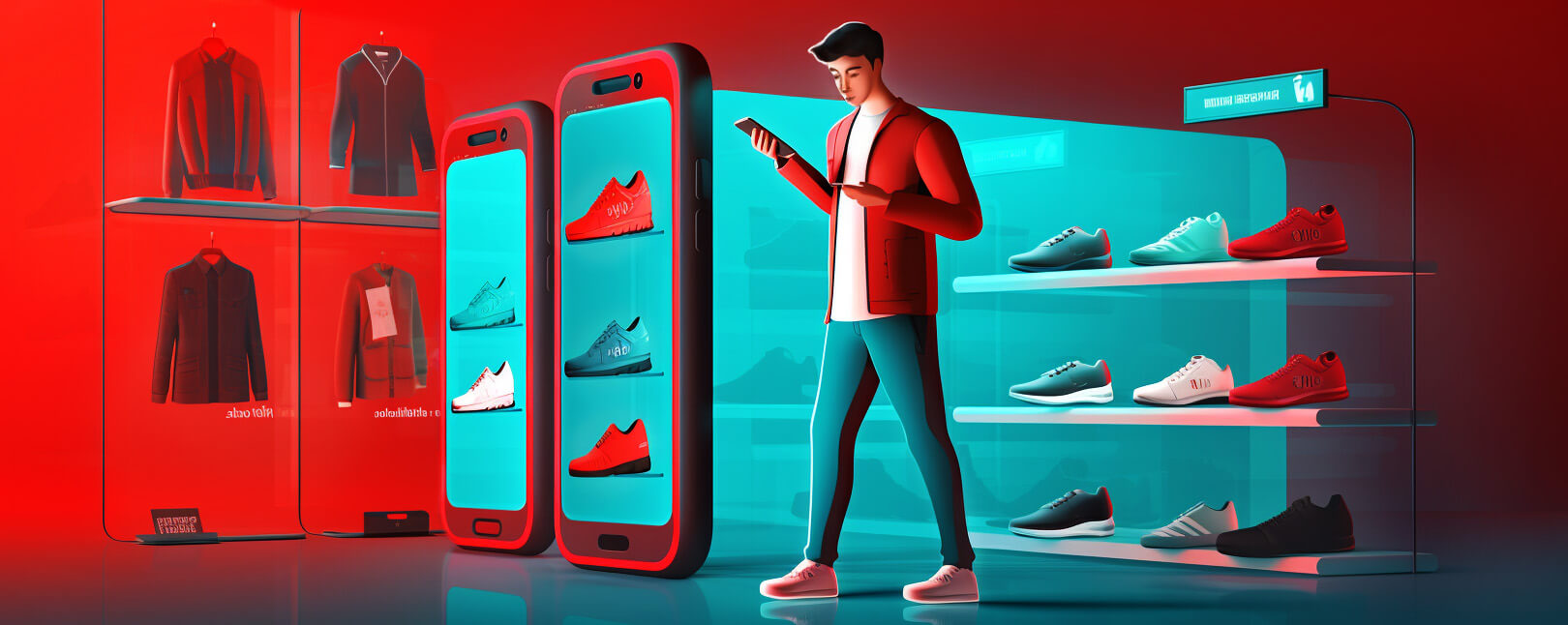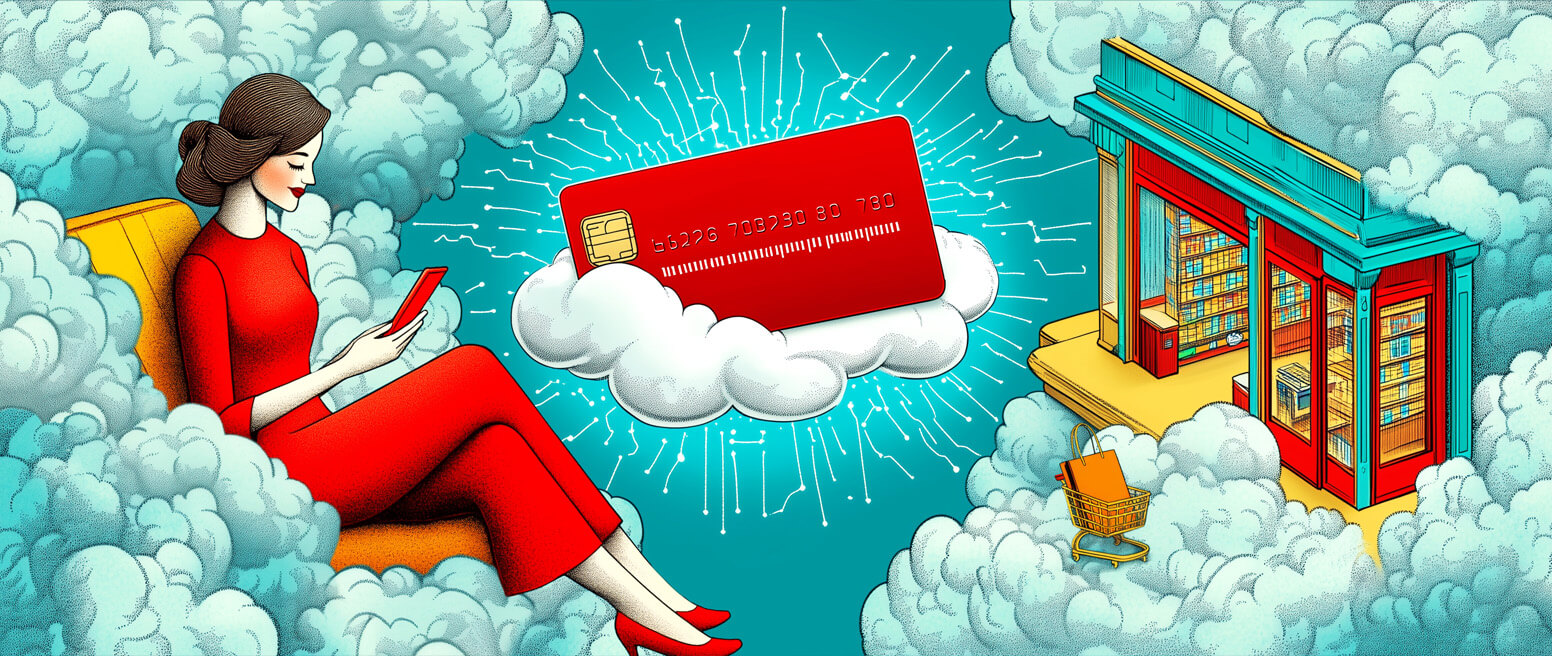Online Shopping vs In-Store Shopping: Is the Future of Retail Sustainable?
For many, shopping is a delightful pastime. For others, it's just another chore to check off the list.
Regardless of where you stand on that question, we all need essentials like food, attire, and household items. Thankfully, we have tons of choices as to where, when, and how we shop.
Do you prefer meandering through store aisles with a coffee in hand, enjoying background tunes? Or, would you rather shop from the comfort of home, and refresh your closet or refill your kitchen shelves while waiting for dinner to cook?
Online shopping vs in-store shopping: how are they different, and which channel reigns supreme?
Recommended reading
- How “Super Apps” May Help Better Serve Your Customers
- Buy Online, Pick Up In-Store—or BOPUS—is Transforming Retail
- Top 15 Customer Returns Reasons in 2024 & How to Avoid Them
- Card-Not-Present Transactions: Know the Risks & Rewards
- What is a Return Customer Rate? How to Calculate Your RCR
- Prime Day 2024: How to Avoid Chargebacks on the Big Day
Defining “Online” vs. “In-Store” Shopping
Before we dive in, let’s define exactly what we’re talking about here.
In-Store Shopping
When we say “in-store shopping,” we’re referring to traditional brick-and-mortar retail. A shopper visits a physical establishment to evaluate, select, and purchase goods or services.This tangible shopping experience allows direct interaction with products, and buyers usually have immediate possession of purchased items. They can also speak with human sales representatives to get help or ask questions. Payment is commonly made through card-present transactions, where a physical payment card or other methods like cash and checks are presented and processed on-site. The buyer then receives a tangible receipt as proof of their purchase.
Online Shopping
Online shopping is a form of digital commerce wherein consumers purchase goods or services over the internet using a web browser or mobile application.Characterized by its boundaryless nature and round-the-clock availability, this shopping method relies on card-not-present (CNP) transactions. The buyer provides payment details remotely without physically presenting the payment card and receives a digital receipt for the transaction. The goods are then shipped to the buyer, or the buyer is able to pick their order up from a designated place.
Essentially, online shopping allows customers to make purchases from anywhere, 24 hours a day. In-store shopping, on the other hand, allows customers to walk away with the items they want to purchase right away. However, the latter requires walking into a physical store to make purchases with a debit or credit card.
Online Shopping vs In-Store Shopping: The “Pros” of Each Channel
There's an ongoing debate in the ever-evolving landscape of commerce: the allure of the digital shopping cart versus the tactile experience of a physical store.
Both avenues cater to different facets of the consumer experience. Let's delve deeper into the nuances of online shopping and in-store shopping by exploring a few of the top “pros” of each channel:
Both shopping methods have their advantages, offering a wide array of choices for buyers depending on their needs and preferences.
Online shopping extends the frontiers of convenience, but in-store experiences resonate with touch, feel, and immediacy. It's a dynamic world, and each mode has its rhythm, echoing the diverse preferences of the global consumer.
Online Shopping vs In-Store Shopping: The “Cons” of Each Channel
While there are certainly benefits to both shopping models, they also come with unique challenges. So now, let's delve into the potential cons associated with each:
Again, consumers and merchants need to weigh the pros and cons of each option. Shoppers should base their purchasing decisions on their individual needs and preferences. Merchants, however, should do what they think will best position them to serve customers in a cost-effective manner.
Recent Trends in Online & Brick-&-Mortar Shopping
Consumers across all age groups increasingly rely on the internet for their shopping needs. Whether it's the allure of time-saving or the potential for cost savings through great deals, online shopping is an appealing choice for many.
We can expect a 10.4% increase in online shopping by year’s end, accounting for $6.3 trillion dollars in total consumer spending. That said, 73% of shoppers still prefer in-store shopping vs online shopping. Another phenomenon here is omnichannel retail; these exchanges often start with a customer shopping online, but finishing their experience in person to get the best deals.
Physical stores eliminate shipping fees, present real-time promotional offers, and provide the tangible experience of inspecting a product firsthand. Certain retail experiences, especially those requiring personalized service or involving food and beverages, cannot be replaced by the digital domain.
Ultimately, there is ample room for both methods in a given retail strategy, often with one hand feeding the other. As we’ll see below, savvy merchants prioritize a hybrid sales approach bolstered by increased personalization and omnichannel marketing efforts.
5 Ways Shopping Channels Will Change in 2024
The retail landscape is undergoing constant metamorphosis, driven by technology and evolving consumer preferences. That’s why it's important for all stakeholders to stay informed and adaptive.
Several transformative trends are reshaping the very fabric of retail. There’s the seamless integration of online and offline shopping experiences, as well as the prominence of AI-driven personalization. Through it all, the lines between online and in-store shopping are getting increasingly blurry.
Some of the top trends driving this shift include:
#1 | Omnichannel Retail
Omnichannel shopping now accounts for roughly 27% of all retail sales. Gone are the days when retailers could afford to operate purely through a single channel. Platforms like Etsy and eBay might still be digital-only, but the broader trend leans towards a blend of physical stores, websites, mobile apps, and social media channels.
45% of in-store shoppers expect sales associates to be knowledgeable about online-only products. And, since the pandemic, over a third of Americans have integrated features like in-store pickup into their shopping habits. A majority plan to continue this trend. In response, many brands are creating ecosystems for an “always-on” customer engagement approach.
#2 | AI & Personalization
Modern consumers crave personalized shopping experiences. Retailers are tailoring recommendations and marketing campaigns using customer data, AI, and machine learning as a result.
A shining example of this phenomenon is Stitch Fix. The company combines personal preferences with data analytics to offer custom clothing choices. And, as advanced technologies shape the future of retail, personalization will only become more profound.
#3 | Immersive AR & VR Experiences
Augmented and virtual reality are revolutionizing customer-product interactions. These tools can facilitate an interactive marketplace experience. It gives shoppers the ability to showcase products in a dynamic, interactive way.
The IKEA Place app, for instance, allows users to virtually place furniture in their homes. Research suggests that the AR and VR retail sectors will experience substantial growth, potentially reaching billions by 2030.
#4 | Sustainability
Customers want sustainable products, and are often willing to pay more to get them. Beyond tech trends, sustainability is gaining traction. This trend is not limited to a question of online shopping vs in-store shopping; simply ditching single-use plastic bags in store will not cut it.
Driven by consumer demands for eco-friendly practices, brands like Patagonia are pioneering sustainable materials and fair trade practices. And, with rising inflation, the second-hand retail market is also gaining momentum. Many brands are starting to promote a “circular economy” as a more sustainable solution for the market.
#5 | mCommerce, In-Store & Out
By 2024, mobile commerce could account for over 40% of eCommerce sales. The increase in app usage, especially among Millennials and Gen Z, hints at a future where smartphones dominate the shopping experience. And, with the rise of mobile wallets like Google Pay and Apple Pay, tech giants are positioning themselves as key players in the evolving payments landscape.
Brands must evolve; not just to thrive, but simply to survive. Retailers prioritizing innovation, sustainability, and genuine customer engagement will undoubtedly lead the charge in this exciting new chapter of global commerce.
Don’t Forget About Fraud & Chargebacks
As more facets of eCommerce bleed into brick-and-mortar shopping, we’re going to see more problems endemic to the online market move into physical retail, too. Notably, an uptick in fraud and chargebacks.
Threats like phishing, account takeovers, and the use of stolen card details are all common problems in the CNP space. This is in addition to existing threats to physical retail, like skimming devices, fake credit cards, and return fraud.
When it comes to chargebacks, no retailer is safe. Chargebacks can stem from genuine misunderstandings or dissatisfaction, miscommunication, or even deliberate first-party misuse. A “one-size-fits-all” solution will not address all these threats effectively. Only a layered approach will ensure that, even if one line of defense is breached, others are in place to counter the threat.
Have additional questions about online shopping vs in-store shopping? Want to learn more about building a better strategy to contend with fraud and chargebacks? Continue below to speak with one of our dispute management experts.
FAQs
What percentage of people shop online vs in-store?
Around 76% of US adults shop online. At the same time, 46% of shoppers say they still prefer to shop in-store.
Is online shopping better than in-store shopping?
Both online and in-store channels have their advantages. Online shopping offers unparalleled convenience and a vast product selection, often at competitive prices. In contrast, in-store shopping provides tactile experiences and immediate possession of items. Ultimately, the "better" option depends on individual preferences and priorities.
What is the difference between online and in-store?
Online shopping consists of browsing for and making purchases online with a credit or debit card. In contrast, in-store shoppers frequent brick-and-mortar stores where they present physical payment methods to make purchases.
Do consumers prefer online shopping or in-store?
It’s a mixed bag. Around 76% of US adults shop online. At the same time, 46% of shoppers say they still prefer to shop in-store.
What are the disadvantages of online shopping?
Online shopping can lead to unexpected shipping costs, lacks the tactile experience of seeing and feeling products, and may involve complicated return processes.














